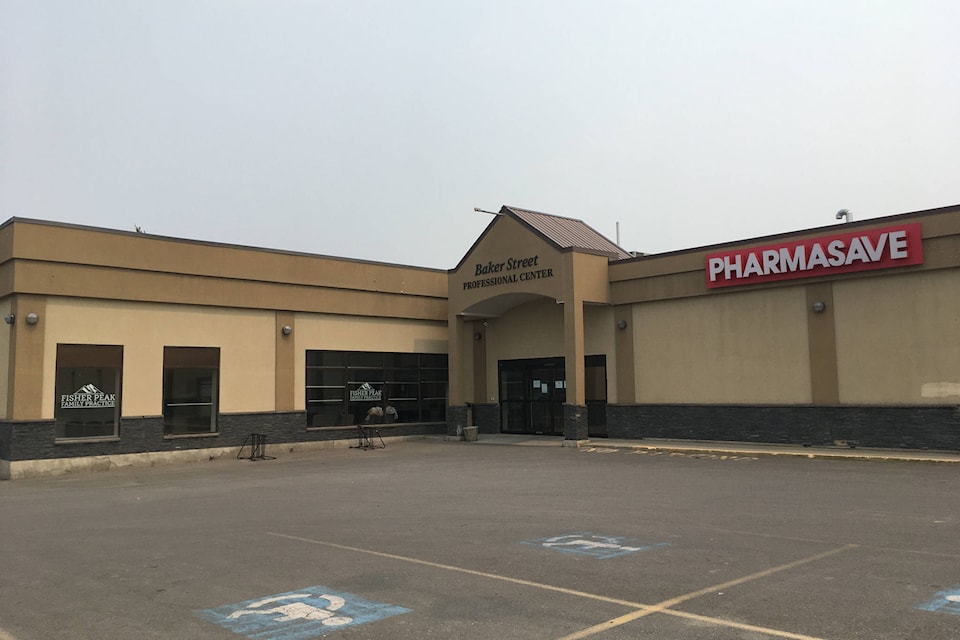Local hospital board directors vented frustration with provincial officials over capital funding planning processes, as a local funding commitment had yet to be approved when an Urgent and Primary Care Centre was announced earlier this week in Cranbrook.
Directors with the Kootenay East Regional Hospital District (KERHD) board voiced their concerns during a quarterly meeting in Cranbrook on Friday, with some noting that it hadn’t approved a $1.2 million funding cost-share requested by Interior Health.
“It’s unfortunate that the announcement couldn’t have been held off until next week, until we’d had the chance to have this discussion,” said Susan Clovechok, Area F director in the Columbia Valley. “But that said, it’s done. I’m somewhat surprised that we were not made aware in some way, shape or form that there was going to be a $3 million capital project when we did our budgets.
“Surely this was on the books.”
The UPCC, announced by Health Minister Adrian Dix on Wednesday, Aug. 4, will be located at the Baker St. mall in Cranbrook and staffed seven days a week, 365 days a year. Opening in November, it will feature 13 patient care stations for examinations, assessments and consultations for urgent but non-life-threatening medical conditions.
Staffing of 22 health care professionals will include doctors, nurse practitioners, registered nurses, mental wellness clinicians, physiotherapists, occupational therapists, social workers, Aboriginal health coordinators and a clinical pharmacist.
The centre is a collaboration between Interior Health, the Ministry of Health, the East Kootenay Division of Family Practice, and the Ktunaxa Nation.
In addition to treating non-life-threatening conditions, the UPCC will also serve as a resource for attaching patients to a regular primary care provider. It will also integrate other community supports available in the city through a team-based approach.
Capital funding needed for the project is budgeted at $3 million — $1.8 million to be provided by Interior Health through the province, and $1.2 million to be provided through the KERHD.
To pay for the it’s share, the KERHD will remove $1.2 million from a larger lump sum set to be transferred into a reserve fund earmarked for major infrastructure projects.
While the board voted to approve it’s share of the UPCC funding, some hard feelings remained.
Dean McKerracher, KERHD board chair, voiced his disappointment that the board and local taxpayers were not acknowledged by the province and top Interior Health officials as funding partners when the province announced the UPCC.
“There is some disgust and disappointment with the Minister of Health and the [IH board] chair Doug Cochrane for neglecting to announce also that the Kootenay East Regional Hospital District Board and the taxpayers — 80,000 taxpayers in this region — are funding this facility,” said McKerracher.
The issue also reignited a debate about local capital funding priorities versus priorities held by the provincial government.
Some directors around the KERHD board table have been pushing the province for a master strategic plan that would set out shared capital funding priorities, in terms of urgency and need, for health care facilities in the region.
Based on that strategic plan, the board could then plan and budget accordingly for upcoming capital projects, knowing that the province shares the same funding priorities.
“It goes back to our master plan, we keep talking about a master plan, we just talk about it and then these projects come in for a million [dollars] here, a million [dollars] there, how do you do any planning?” said Stan Doehle, Area B director for the South Country region. “I think the province has to really wake up and work with us…”
The hospital board typically sets the budget in the first quarter of the year, which can make financial planning a challenge when approached by the province for out-of-cycle capital requests.
The debate over last-minute funding requests from the province came up last year, when provincial grant funding became available for energy conservation projects at local health care facilities, however, the board was hesitant to commit it’s cost-share because the budget had already been largely set and the projects weren’t considered a health care priority.
